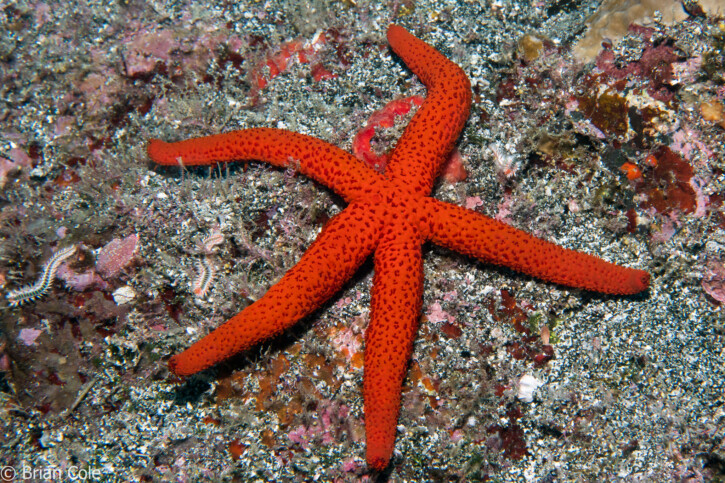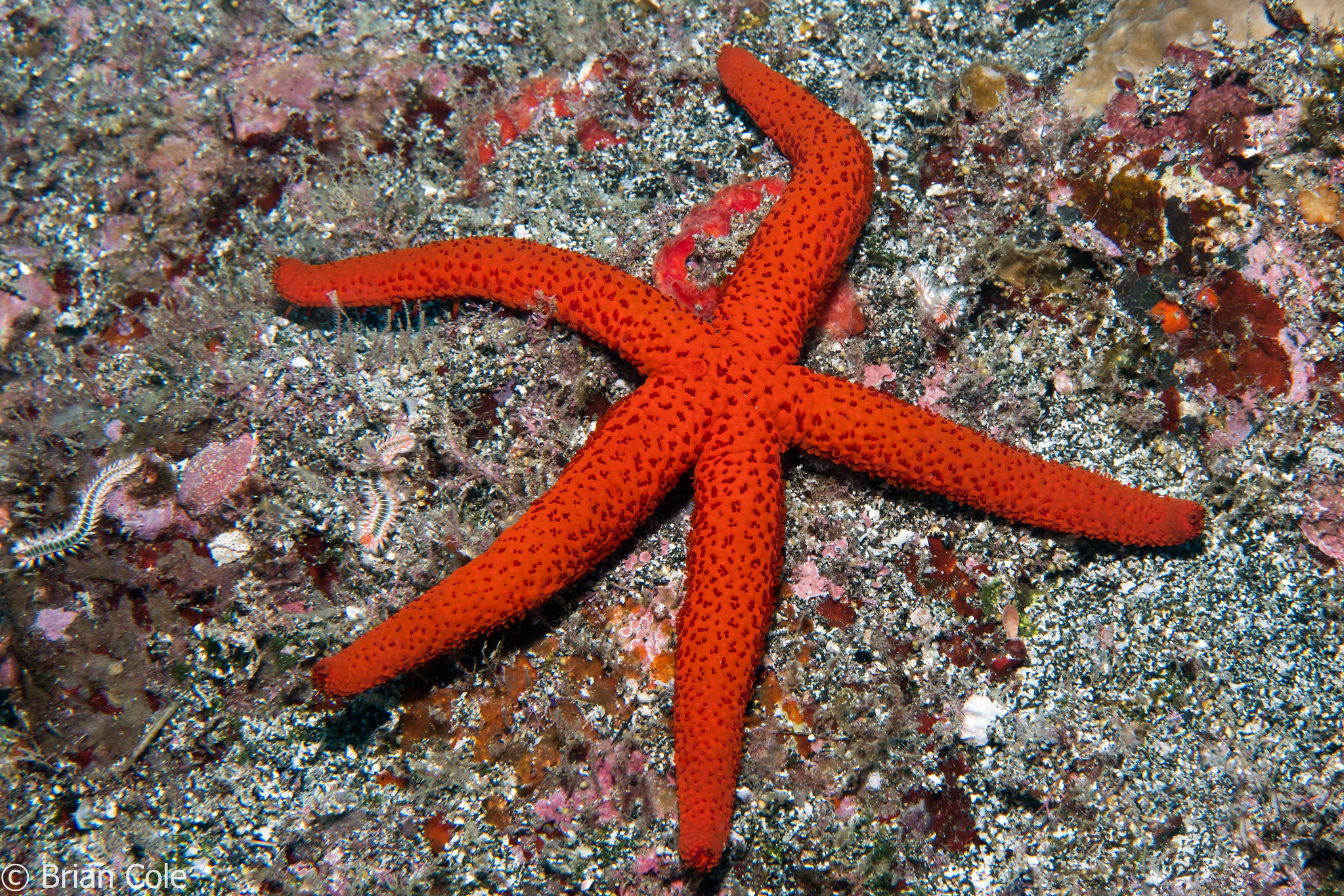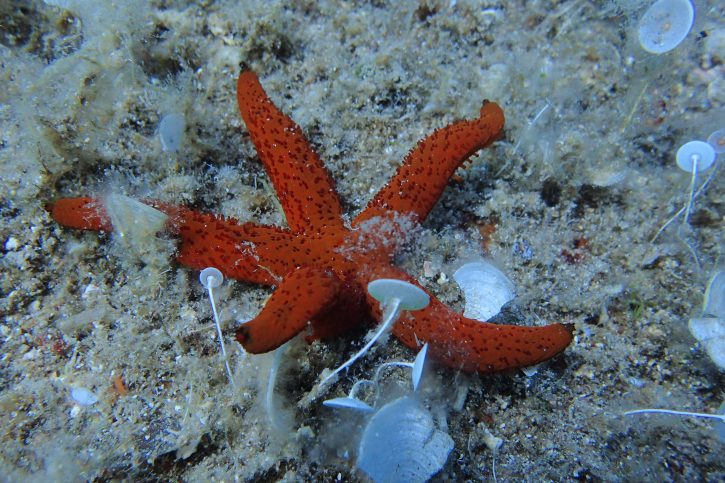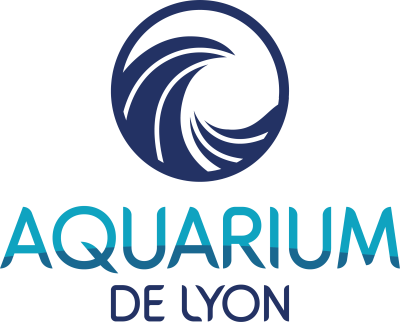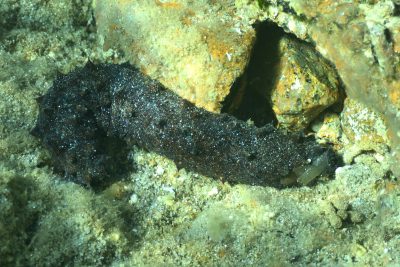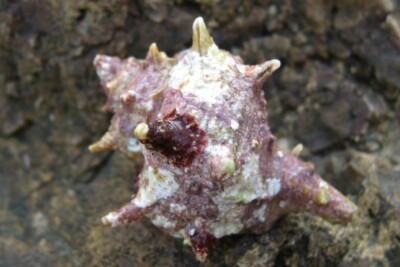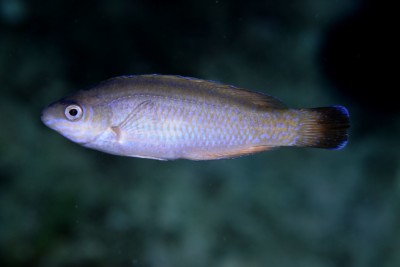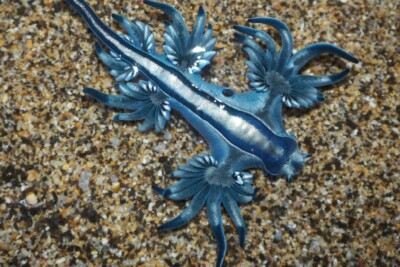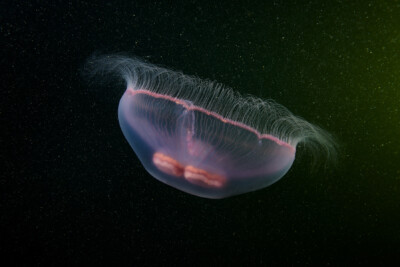Introduction
Echinaster sepositus, commonly known as red starfish, is a salt water echinoderm from the Mediterranean Sea.
This sheet is currently being prepared. The texts currently proposed come from our data model or are being drafted. To request priority for this content, you can write to us HERE.
Who is it?
Morphology
-
Size10 - 20 cm
-
Longevity5 year
-
Size10 - 20 cm
-
Longevity5 year
How to recognize This echinoderm ?
The red starfish measures between 10 and 20 cm. This echinoderm is unicolore with a predominantly rouge and orange body.
Behaviour & Life cycle
-
dietscavenger
-
Sociabilitysolitary
-
territorialNo
-
Way of livingdiurnal
The red starfish is an echinoderm solitary. This species is scavenger .
Although the red starfish is non-territorial, it is sometimes aggressive towards other species.
Reproduction
-
Reproductionovipare qui pond en eau libre
-
Active sexual selectionNo
The red starfish is an echinoderm ovipare qui pond en eau libre.
Harmless species
This species does not represent any particular threats to humans when encountered in its natural environment.
Origin and distribution
What is its habitat?
Natural environment characteristics
-
Temperature13 - 17 °C
-
Depth0 - 250 m
Biotope presentation
The red starfish is most often found at a depth between 0m and 250m. However, it is not impossible to find this species at other depths.
Species of the same biotope
Fishkeeping
Not recommended
We do not recommend keeping this species in an aquarium. It has unpredictable needs which, if not met, generate significant stress, potentially leading to a shorter life expectancy, an interruption of its growth or the development of pathogens.
To go further
Sources & Contributions
Participation & Validation
The Fishipedia team and specialist contributors are committed to providing high-quality content. However, although the information comes from scientific sources or testimonials from specialists, the cards may contain inaccuracies.

Adrien Falzon

Aurélien Calas
Translation
Translation done with the valuable contribution of our translators, who make this information available to a wider audience. We sincerely thank them for their commitment.
Bibliographic references
- - GBIF
- - LA VIE SOUS-MARINE EN MEDITERRANEE - Humberg B. - Guide Vigot - 2000.
- - FLORE ET FAUNE DE LA MEDITERRANEE - Mojetta A. - Ghisotti A. - Solar - 1995.
Scientific partners
Species of the same biotope
